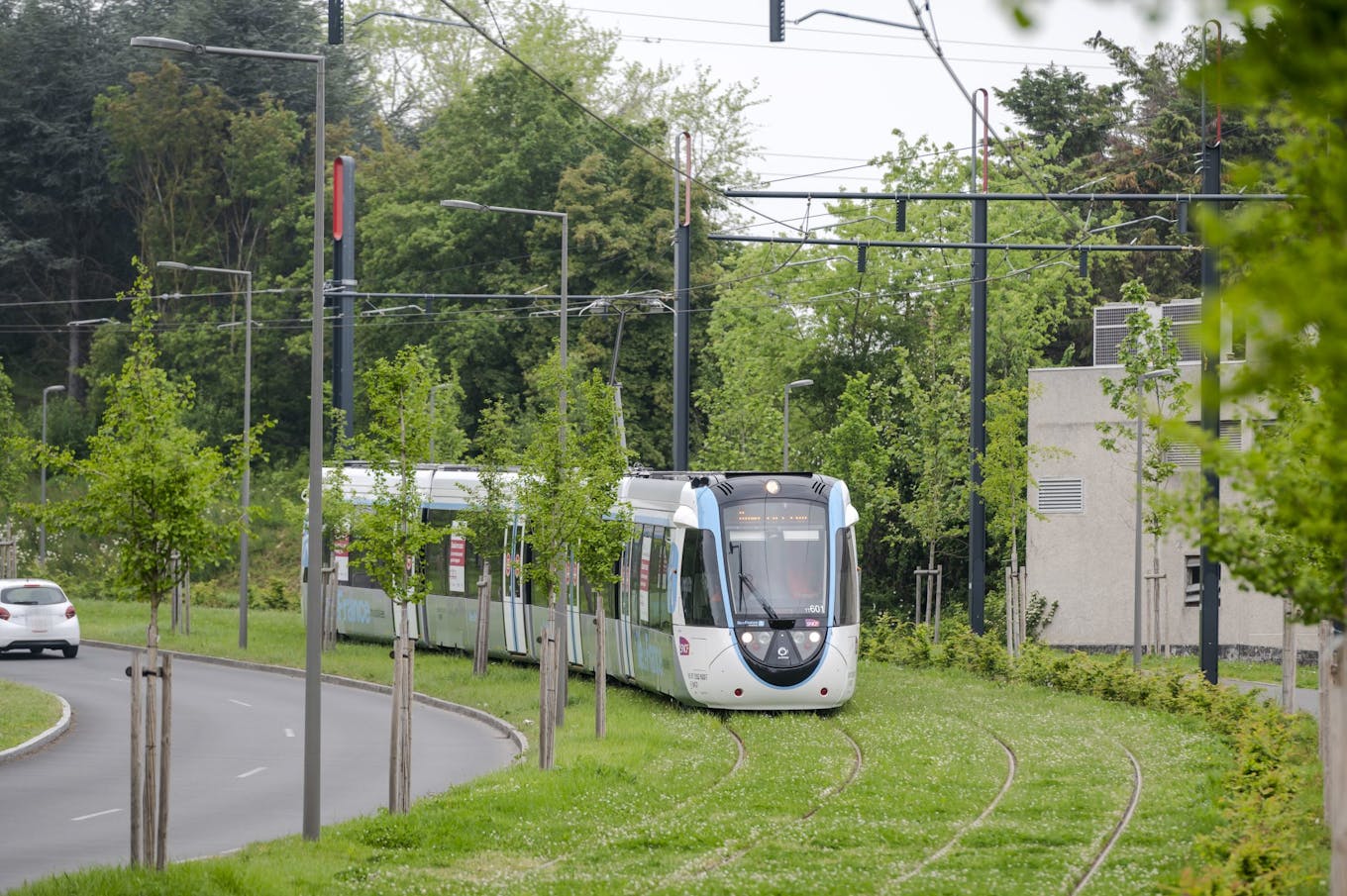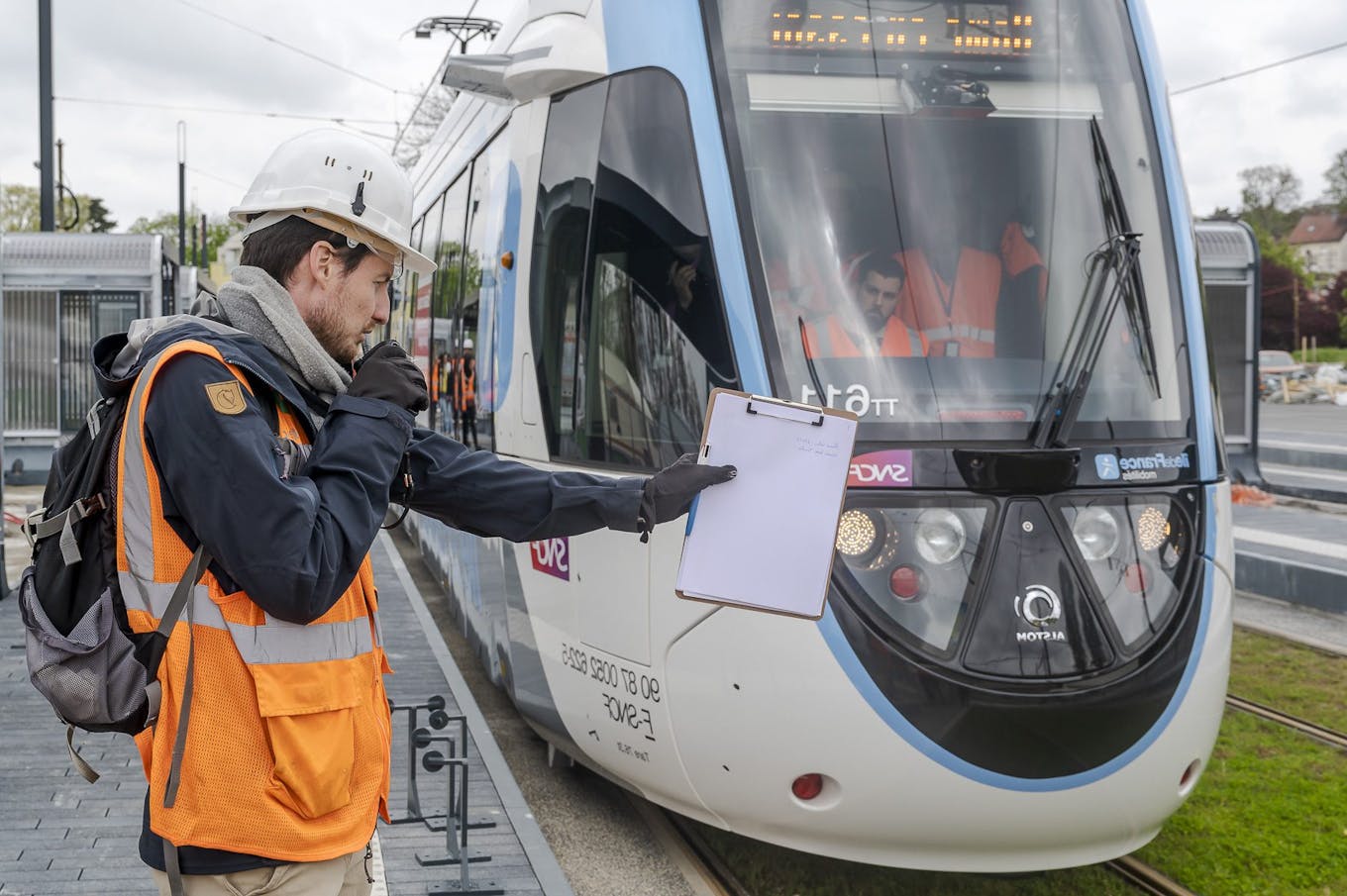The tests

The tests are a decisive step towards the commissioning of the T12 tram-train. They make it possible to validate the circulation of the trains and the proper functioning of the equipment when the tram-train passes.
How do the trials work?
Static tests
Before being set in motion, the tram-train is checked to ensure that it complies with the required safety and quality standards. Static tests are performed to test systems such as brakes, electrical, doors and seats, etc. The conformity of the infrastructure is also checked (rails, engineering structures, signalling, switches).
Dynamic testing
Once the static tests are completed, the dynamic tests can take place. They make it possible to validate the circulation of the trains and the proper functioning of the equipment when the tram-train passes. Braking system for tram-trains, integration at the stations, operation of the light signalling, etc. A complete set of tests is carried out to ensure the safety and comfort of circulation. These tests are taking place gradually with an initial phase of low-speed traffic and only on certain parts of the line, followed by a gradual increase in speed.
The dry run
Once all the tests in motion have been passed, the dry run begins. This is a dress rehearsal before the commercial commissioning scheduled for the end of the year. All the trains are put in real traffic conditions, with also the tests of disrupted situations to anticipate all situations, stopping at each station, but always without passengers on board.

The test leaflet

Find all the information on the T12 tram-train tests and the signage to be followed in the dedicated leaflet.
